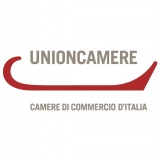
The Monregalese (the area covered by the ancient province of Mondovi, including the mountainous region between the Tanaro and the Pesio) in the province of Cuneo, is one of Piedmont’s few marble reserves, and was certainly its most important one in the period when the use of coloured marble was at its peak (17th-18th centuries).
The quarries of the past provided a wide range of marbles, with white and coloured varieties including black, violet, red, persichino and yellow. These have very attractive qualitative features, but were seldom available in significant quantities.
The use of Monregalese marble dates back to Roman times: some gravestones found in Vicoforte and Mombasiglio are made from Verzino and Bigio di Frabosa varieties. The late 16th and early 17th century was a particularly important time for the recognition and use of some of the area’s most important materials.
During the 17th century, other types of Monregalese marble were discovered and used primarily in Turin, due to the direct control over marble by the central power of the House of Savoy. Yellow Frabosa marble was used in the churches of Santa Maria al Monte, Santa Teresa and San Lorenzo in Turin, and later, in the eighteenth century, by Juvarra in the Chapel of Sant’Uberto in Venaria Reale.
The 18th century was undoubtedly the golden age of Cuneo marble. A wide range of marble types were quarried, particularly the coloured varieties. The extraction of known marble varieties increased over the course of the century, due in part to the improvement of the roads through Val Tanaro.
The first decades of the twentieth century saw the international success of Cipollino Dorato, a marble from Valdieri with excellent decorative features, which was exported and used all over the world: in London (County Hall Council Chamber and Westminster Cathedral), Buenos Aires (the Italian Club Building), Bangkok (Royal Palace), Tripoli (Sidi Hamuda Mosque), Havana (Government Palace) and Sofia (Military Academy Building).
Production
The rock is brought down using explosives. It is divided into blocks by drilling, loading the holes with explosives and blasting. The extracted stone is then transported to workshops, where it can be given various finishes, according to its intended use. These can include polishing with abrasive wheels or flame finishing, which involves intense heating followed by rapid cooling with jets of water.
Another type of finish is bush hammering, obtained with compressed air percussion tools. The stone can be marketed in the form of naturally split slabs and blocks.
The local area
The stone industry in the province of Cuneo is composed of 219 companies registered with the Chamber of Commerce. The type of activities in which they are involved range from quarrying and mining to stone masonry (cutting, shaping and finishing). The geological and territorial features of the Province of Cuneo make it a mining province of primary importance in terms of quarried stone.
Cuneo’s quarries provide a large quantity and variety of basic products, not only for construction but also for various other industries. These include aggregates for concrete, limestone for cement, lime and various other uses, clay for bricks, and silica sand for ceramics and glassware. Its building and decorative stone sector is also of particular importance.
By Camera di Commercio di Cuneo with Unioncamere



